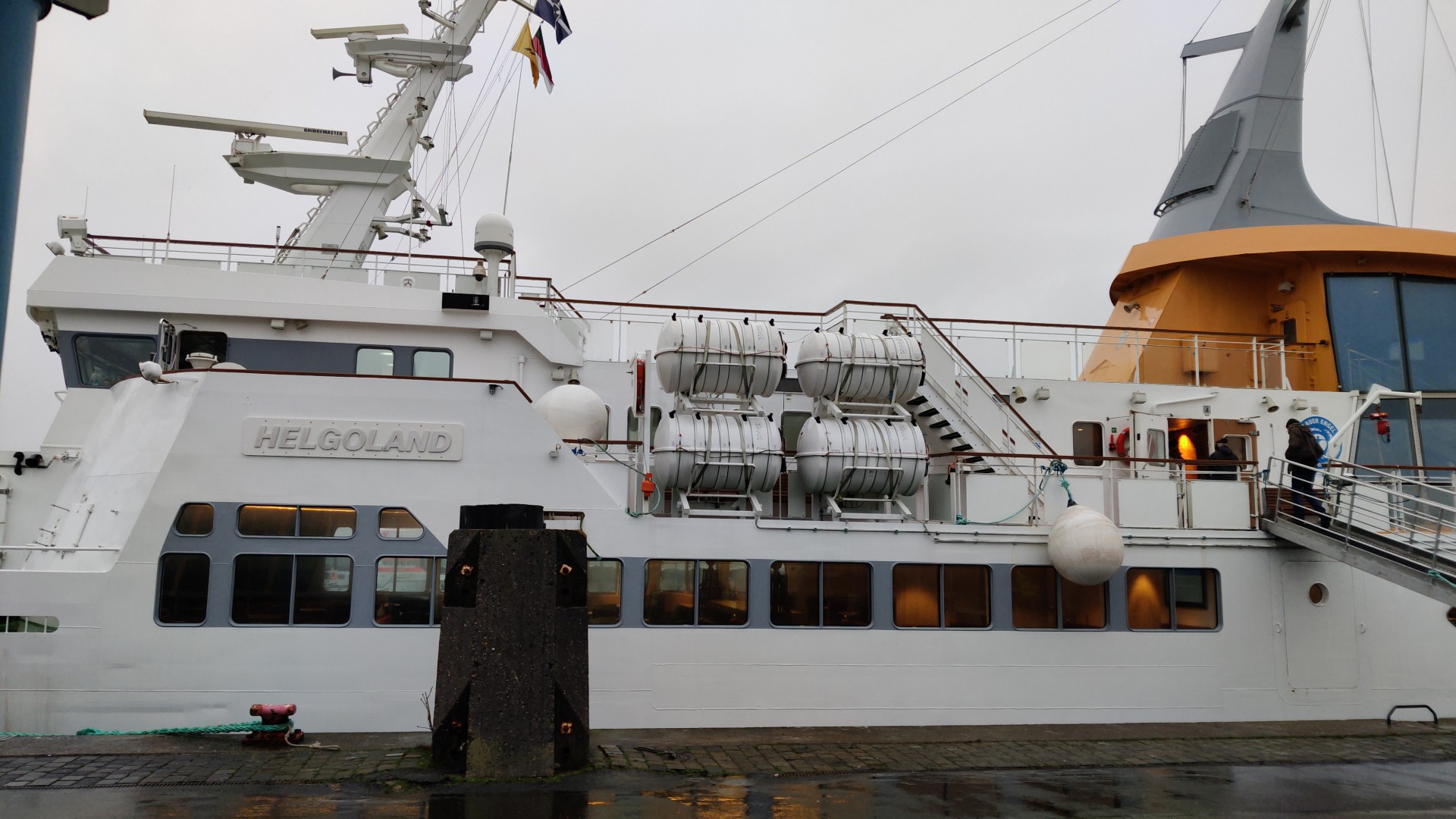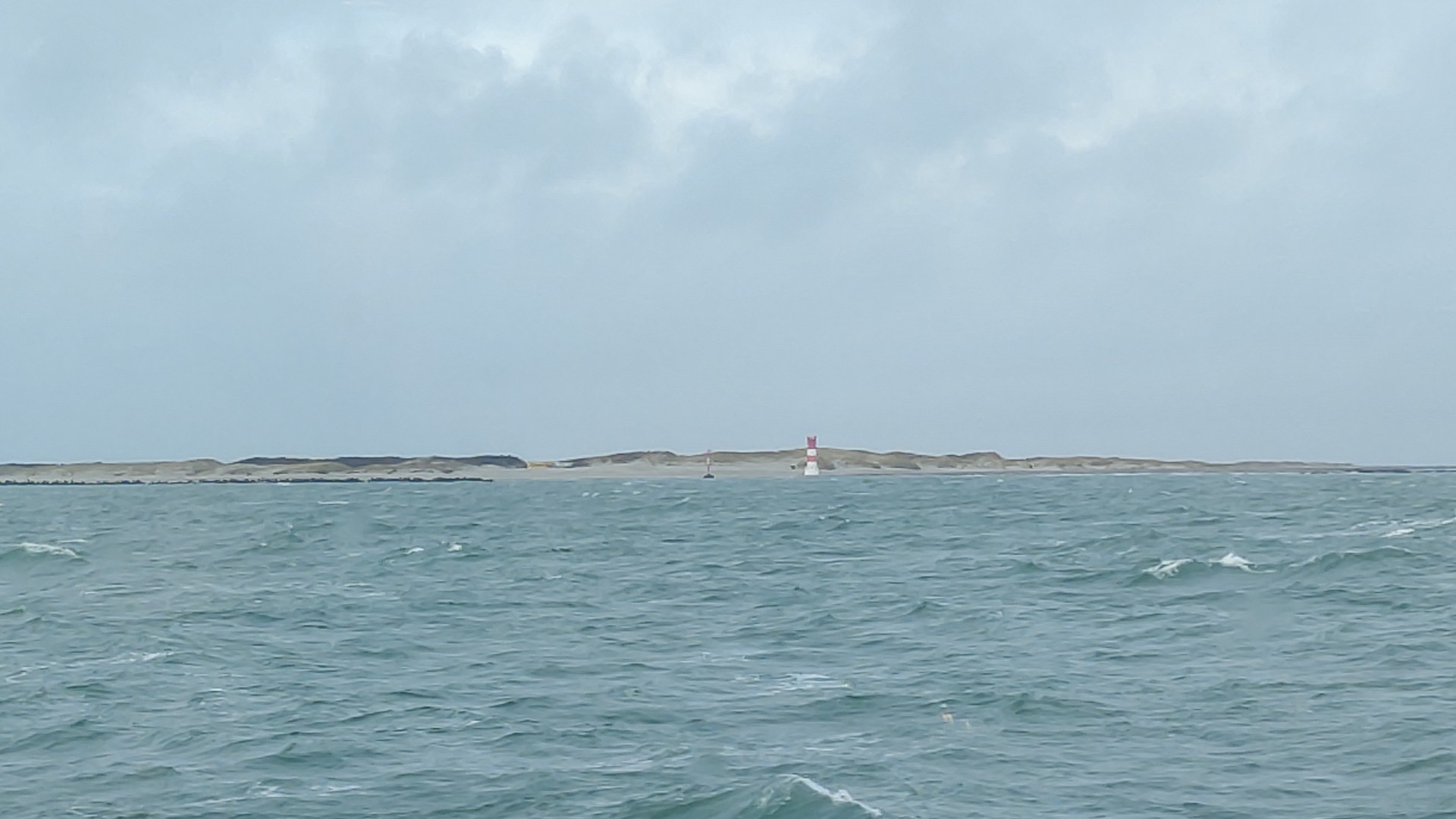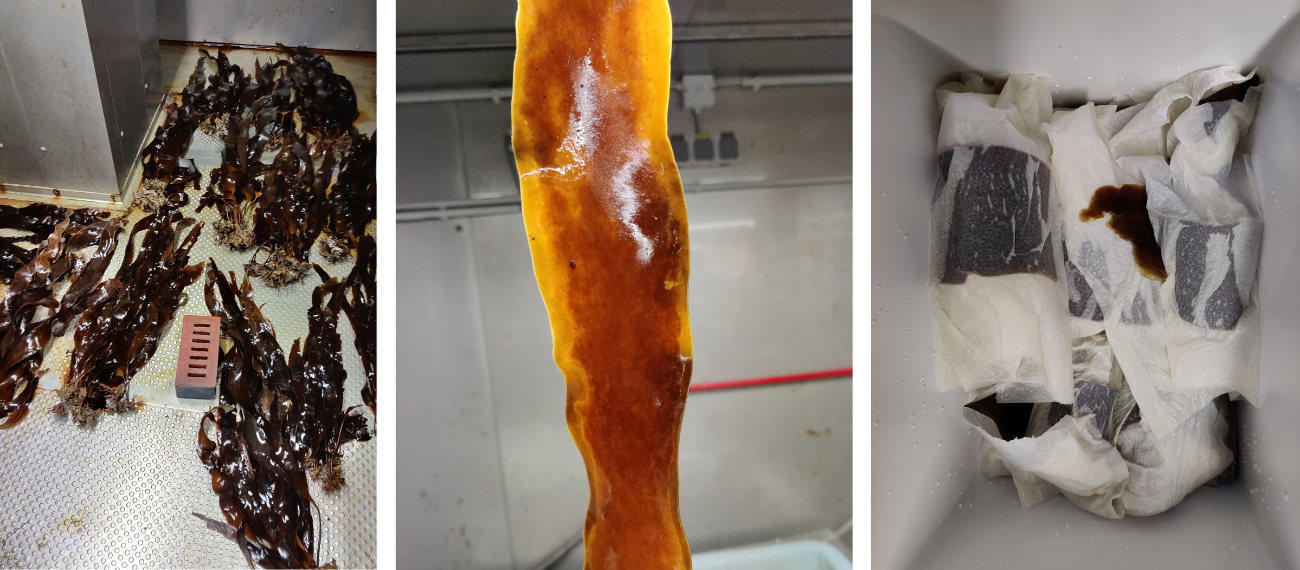Seaweed Sampling and a Trip to Helgoland
As the operational phase of the UNITED project approaches, Pilot teams are working at full speed to make final preparations. For the German Pilot this means procuring seaweed strains from the North Sea, for professional propagation in a lab. The propagated seaweed seedlings will be later on seeded on longlines and nets to be installed close to the FINO3.
It is 5 o’ clock on Monday morning, when Maria Jaeger (research assistant of German Pilot team), loads the car with cooling boxes. Today’s destination is the island of Helgoland, where she will meet with the AWI diving team (Alfred Wegener Institute, Helmholtz Centre for Polar and Marine Research), to pick up seaweed samples (Saccharina latissima), the divers collected two days earlier. “We want to cultivate Saccharina strains, which are indigenous to a 100 km radius around the FINO3 research plant, in order to prevent the transfer of alien species and diseases or parasites to that area. Those plants are also the best adapted to the site characteristics”, explains marine biologist and German project lead Eva Strothotte. “In our case, this means, we have to use Saccharina strains from either Sylt or Helgoland Island.”
Around 8 am, Maria Jaeger arrives at the terminal in Cuxhaven, from where the ferry leaves for Helgoland. Before entering the boat however, every passenger needs to take a COVID-19 antigen test, and only in case of a negative test result, is granted the passage to the island. Luckily, the test was negative and she continues her trip on a rather turbulent and rough ride. “I am glad, I make it to Helgoland at last. Originally, I planned to leave last week, but the ferry ride got cancelled, due to bad weather and high waves”, she states.

Figure 1: Ferry to Helgoland.
Once the vessel docked, everything hast to go very fast, as the ship leaves for Cuxhaven 1.5 h later. Together with the seaweed specialist from the AWI the most suitable Saccharina plants are wrapped in wet kitchen towel and placed in cooling boxes, to provide early sporulation. “We are looking for plants, which have already developed sori, the parts used for propagation. You can best spot a sorus, the dark patch, when holding the plant against the light,” the AWI scientific researcher elaborates.

Figure 2: Helgoland Dune.
Back in Cuxhaven, the samples are sent to a seaweed propagation lab, which will grow gametophytes that will be planted on a seaweed net, to be installed at FINO3 in September 2021. “If the young seedlings develop well at FINO3 it would mean, that it is in fact possible, to professionally cultivate seaweed offshore, which could open up entirely new possibilities for multi-use offshore concepts,” Eva Strothotte explains enthusiastically. “But this is all in the future, and we still have a long way to go. For now we are grateful for the fantastic collaboration with the AWI diving and research team, who provided us with such great propagation material“, she says.

Figure 3: Saccharina latissima plants, collected by AWI diving team. Sacchrina latissima plant with developing sorus. Wrapped seaweed samples in cooling box, ready for transportation.
